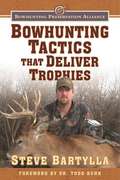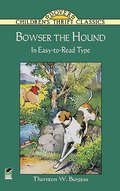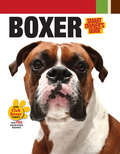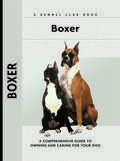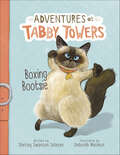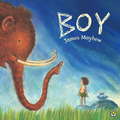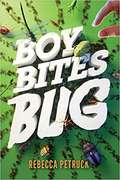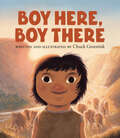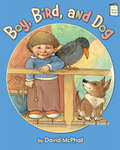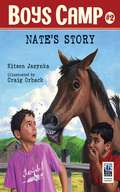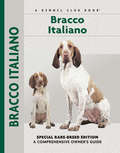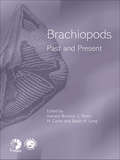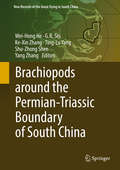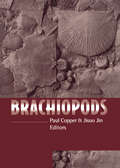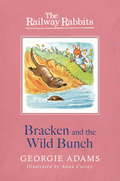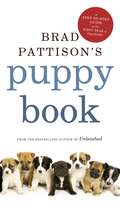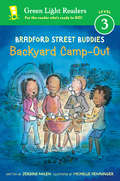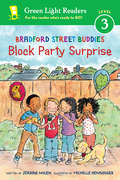- Table View
- List View
Bowhunting Tactics That Deliver Trophies: A Guide to Finding and Taking Monster Whitetail Bucks
by Steve Bartylla Todd KuhnSteve Bartylla gets down to the nuts and bolts of what it takes to bowhunt public land whitetails today. Bartylla consistently proves that hard work, an in-depth understanding of whitetail deer and how they use terrain—combined with an ability to read aerial photographs and interpret contour maps to find pockets where mature bucks exist—are the necessary tools for a bowhunter's success. In Bowhunting Tactics That Deliver Trophies, you will find excellent advice on determining what food sources are hot during different times of the year, inside tips on what really happens when hunting with wind in your face, and how to get the most from each and every tree stand. Bartylla also shares savvy advice on hunting from ground blinds, how to maximize your time when hunting public land, and the most effective trailing tools to find your buck. Whether you are just beginning to hunt with a bow or you are a seasoned bowhunter, you will find a tremendous amount of information that you can use each and every deer season.
Bowser the Hound (Dover Children's Thrift Classics)
by Thornton W. BurgessBowser the Hound isn't very clever -- certainly not as clever as Old Man Coyote, who's full of tricks! There's one thing, though, that Bowser's really good at, and that's pursuing someone who'll give him a long, hard run. Actually, he'll go without eating just for the pleasure of chasing Reddy and Granny Fox or Old Man Coyote.One day, Bowser gets more than he bargained for when Old Man Coyote decides to lead him on a long chase, just for fun, and make Bowser run and run. In fact, Bowser runs out of the forest and the old pasture until he's so far from home, he feels as if he is in another country. But with the help of Blacky the Crow and other friends, Bowser finally gets even with the old coyote.Young readers and nature lovers of all ages will love this appealing story of exciting animal life in the Green Forest.
Box Turtles and Other Pond and Marsh Turtles (World Book's Animals of the World)
by Christina JohnsonIntroduces the box turtle and talks about keeping one as a pet.
Boxer
by Dog Fancy MagazineSmart Owners Guide: Boxer is the first interactive breed book of it kind to offer new and novice owners a fun new way to learn about caring for their loyal companions. Boxer offers the most up-to-date online support with instant access to Club BoxerTM where owners can meet and interact with other dedicated owners, download charts and checklists, play Boxer-specific games, take quizzes, and send Boxer themed e-cards. The book contains easy-to-read, informative content, with addition smart tips, notable quotations, fun facts, and more than 100 adorable breed photos that keep you flipping through the pages.
Boxer
by William ScolnikThis Comprehensive Owner's Guide to the Boxer serves as a complete introduction to this handsome German breed that has become one of the world's most cherished companions and most relied-upon working dogs. The loyal and friendly Boxer is impossible to beat for affection, elegance, and the sheer "paws-on" fun! Owners will read about how the Boxer was invented in Germany and the important people and dogs who put the canine pugilist on the map-from Frau Stockmann and Bang Away to the modern-day movers and shakers in England, America, Canada, and beyond.The history chapter is followed by a chapter devoted to the characteristics of this exceptional working breed, offering sound advice about which owners are best suited to this vigorous and active canine.New owners will welcome the well-prepared chapter on finding a breeder and selecting a healthy, sound puppy. Chapters on puppy-proofing the home and yard, purchasing the right supplies for the puppy as well as house-training, feeding, and grooming are illustrated with handsome adults and puppies bursting with energy and personality! In all, there are over 135 photographs in this useful and reliable volume. The author's advice on obedience training will help the reader better mold and train into the brightest and most well-mannered dog in the neighborhood. The extensive chapter on healthcare provides up-to-date detailed information on selecting a qualified veterinarian, vaccinations, preventing and dealing with parasites, infectious diseases, and more. Sidebars throughout the text offer helpful hints, covering topics as diverse as historical kennels, toxic plants, first aid, crate training, carsickness, fussy eaters, and parasite control. Fully indexed.
Boxers Are the Best! (The Best Dogs Ever)
by Elaine LandauWhat's that dog with the short coat, square build, and seemingly boundless energy? It's the boxer! Boxers are kind hearted dogs with keen intelligence and playful spirits. Their owners think they are the best dogs ever--and it's easy to see why. If you're a boxer fan, you'll want to learn all about this breed, from its loyal personality and strong physique to its history as a herding dog in Germany. You'll also want to find out how to care for the boxer. So check out this go-to guide for boxer lovers--and learn all about why boxers are the best breed there is!
Boxers: Everything about Purchase, Care, Feeding, Breeding, and Training
by Herta E. Kraupa-TuskanyAn expert answers all your questions about boxer care: feeding, behavior, health, breeding and much more. Up-to-date and informative, yet clear enough for young pet owners.
Boxing Bootsie (Adventures at Tabby Towers)
by Shelley Swanson SaterenBootsie is the sweetest Himalayan cat until she feels threatened by other cats. Then there's trouble! When Bootsie uses her boot-like black paws to box other guests at Tabby Towers, the hosts warn that she may need to check out early!
Boy
by James MayhewBoy wants a warm and cosy place to sleep - however, he doesn't want to share it with anyone else. So he goes off exploring, looking for the perfect place that is all his own. But, in a world full of prehistoric animals and dinosaurs, how will Boy find the one place that's just right for him?
Boy Were We Wrong About Dinosaurs!
by Kathleen V. KudlinskiThe ancient Chinese thought they were magical dragons. Some old-time scientists thought that because they were so big, all they could do was float in water. Boy, were they wrong! Even today, once-common notions about dinosaurs are being revised as new discoveries are made. This lively book about the perennially popular subject of dinosaurs offers fascinating insight into how certain theories were formed, and then how those theories were proved or disproved. It demonstrates that scientific thought is as creative as it is logical and invites budding scientists to come up with their own ideas. This book offers a lively account of theories from the past about dinosaurs and how these theories changed as new discoveries were made.
Boy Bites Bug
by Rebecca PetruckWill didn’t plan to eat a stinkbug. But when his friend Darryl called new kid Eloy Herrera a racial slur, Will did it as a diversion. Now Will is Bug Boy, and everyone is cracking up inventing insect meals for him, like French flies and maggot-aroni and fleas. Turns out eating bugs for food is a real thing called entomophagy. Deciding that means he can use a class project to feed everyone grasshoppers, Will bargains for Eloy’s help in exchange for helping him with wrestling, but their growing friendship only ticks off Darryl more. Will may have bitten off more than he can chew as crickets, earthworm jerky—even a scorpion—end up on his plate, but insects are the least of his problems. When things between Darryl and Eloy heat up, Will wrestles with questions of loyalty and honor—and learns that maybe not all friendships are worth fighting for.
Boy Here, Boy There
by Chuck GroeninkTo a young Neanderthal boy, the world is full of incredible adventures — and unexpected encounters, when he meets a human boy for the first time in this stunning, sparsely worded picture book.A prehistoric Neanderthal family arrives at their new home, a cave, after a long journey. But their young boy's imagination is seized by the beauty and promise of the valley below, and he sets out to explore all that the valley has to offer along, with his place in it. This wild, prehistoric world is full of beauty and wonder, including big and little "hairies" (woolly mammoths). But across a river, the boy spots another boy, a Homo sapiens. He's dressed differently, but so much else is the same. The two share a moment of recognition before the stranger and his family depart, leaving a lasting impression on the Neanderthal boy — one that will have effects reaching throughout history.This picture book, sparingly written and expansively illustrated, imagines an encounter between Homo sapiens and our Neanderthal cousins based on the expanding understanding of prehistoric peoples. It will inspire young readers to see the beauty in discovery and the natural wonders of the prehistoric world as well as our shared humanity.Includes back matter with information about prehistoric life and Neanderthals as well as a bibliography.
Boy, Bird, and Dog (I Like to Read)
by David McPhailDavid McPhail celebrates ingenuity, creativity, and friendship in this picture book created especially for the newest reader. Boy and Bird can go up to the tree house, but Dog cannot. Boy has an idea. Using a rope and a pot, the boy is able to pull the dog up the tree to a vantage point where the three friends can observe all good things in the world—including Mom bearing a plate of cookies. David McPhail's poignant characters express intelligence, joy, and the affectionate bond of friendship. Together they live in a world that is wondrous, safe, and happy. An I Like to Read® book. Guided Reading Level D.
Boy, Were We Wrong About Dinosaurs!
by Kathleen V. Kudlinski S. D. SchindlerThe ancient Chinese thought dinosaurs were magical dragons. Some old-time scientists thought that because they were so big, all they could do was float in water. Boy, were they wrong! This lively book about the perennially popular subject of dinosaurs offers fascinating insight into how certain theories were formed, and then how those theories were proved or disproved. It demonstrates that scientific thought is as creative as it is logical and invites budding scientists to come up with their own ideas.
Boy: An Ozark Coon Hound
by S. P. MeekYoung Greg Oliphant moved to the peace and quiet of the Ozark Mountains in an attempt to rebuild his war-shattered nerves. He bought an old cabin and a coon hound, and found companionship and help in old Uncle Fred McHarney. This is the heartwarming story of the two men, how they built a new hope and future for Greg, and, in the process, trained a young coon hound to become champion of them all
Boys Are Dogs
by Leslie MargolisWhen her mother gets a new boyfriend, sixth-grader Annabelle gets to cope with a new town, a new school, and a new puppy and, while training her puppy, she decides to apply some of the same techniques to tame the unruly boys that are making her middle-school life miserable.
Boys Camp: Nate's Story
by Craig Orback Kitson JazynkaNate has returned to Camp Wolf Trail, his own personal heaven for the past two summers, with a secret: He doesn't want his cabinmates to know that he's a Bird Nerd. At least, that's what the kids at his school called him when they teased him about his newly found interest in birds. Nate confides in Vik, but can he trust his friend, the cabin jokester? Tension grows when before an overnight horse-riding trip Nate discovers that he has another secret. He is terrified of horses, even Herschel, the boney old horse assigned to Nate from the group of rescue horses that the campers ride.Nate shows honesty and bravery when he faces his fears--both of being laughed at for his hobby and his apprehension of riding horses. His friends and his sense of humor save him when his secret is revealed without his consent. But what will Nate do when a wildfire threatens the safety of his friends, the horses, and himself while on a horseback trek deep in the forest? What will be the fate of homely Herschel, the horse no one wants to adopt? With profound admiration of nature, honesty, and above all, boy-friendly, lively humor, acclaimed author Kitson Jazynka and veteran illustrator Craig Orback catch and capture readers' eager interest in this exciting book for boys.
Bracco Italiano
by Juliette CunliffeOne of Italy's most ancient gun-dog breeds, the Bracco Italiano is a celebrated pointing dog prized for its versatility and working ability. As this Comprehensive Owner's Guide reveals, the Bracco is also an exceptional companion dog that makes an intelligent and affectionate family pet. The history chapter is followed by a chapter devoted to the characteristics of this Continental hunting breed, offering sound advice about which owners are best suited to this vigorous and active canine.New owners will welcome the well-prepared chapter on finding a reputable breeder and selecting a healthy, sound puppy. Chapters on puppy-proofing the home and yard, purchasing the right supplies for the puppy as well as house-training, feeding, and grooming are illustrated with photographs of handsome adults and puppies. In all, there are over 135 full-color photographs in this useful and reliable volume. The author's advice on obedience training will help the reader better mold and train into the most well-mannered dog in the neighborhood. The extensive and lavishly illustrated chapter on healthcare provides up-to-date detailed information on selecting a qualified veterinarian, vaccinations, preventing and dealing with parasites, infectious diseases, and more. Sidebars throughout the text offer helpful hints, covering topics as diverse as historical dogs, breeders, or kennels, toxic plants, first aid, crate training, carsickness, fussy eaters, and parasite control. Fully indexed.
Brachiopods (Systematics Association Special Volumes Ser.)
by Howard Brunton L. Robin M. Cocks Sarah M. LongThe growth history of a brachiopod is entombed in its shell, but research on fossil and living brachiopods has generated unanswered questions about these marine invertebrates. Several contributors to Brachiopods Past and Present comment on their differing structures and morphological detail. They use these as examples of ontogenetic and evolutionar
Brachiopods around the Permian-Triassic Boundary of South China (New Records Of The Great Dying In South China Ser.)
by Yang Zhang Wei-Hong He G. R. Shi Ke-Xin Zhang Ting-Lu Yang Shu-Zhong ShenBrachiopods: The O/s Extinction Recovery Fauna (Special Papers In Palaeontology Ser. #No. 74)
by Paul CopperThis collection of conference papers presents information on the molecular genetics, biomineralization, growth and ecology of extant brachiopod stocks (extrapolated back to the Cambrian), and the shell microstructure, taphonomy, paleogeography, evolution, and taxonomy of fossil brachiopods.
Bracken and the Wild Bunch: Book 11 (Railway Rabbits Ser.)
by Georgie AdamsMeet the Railway Rabbits! Join the irrepressible Longears family as they get in and out of scrapes, meet new friends, and perform daring rescues. But Burdock the buzzard and the terrifying Red Dragon, are always on the lookout for naughty rabbits who stray too far from home...Fun and games for Bracken when he meets some mischievous otters who play havoc along the riverbank. Heartwarming, hilarious, with Anna Currey's charming illustrations, this is a brilliant new animal adventure series from a best selling children's author.
Brad Pattison's Puppy Book: A Step-By-Step Guide to the First Year of Training
by Brad PattisonCanine behaviourist, dog advocate and bestselling author Brad Pattison is back with his essential guide for all things puppy. From choosing the right breeder and your pup's first days with your family to street safety, chew training, grooming and bathing, Brad Pattison's Puppy Book covers pretty much everything a new dog owner needs to know. While Unleashed covered Pattison's basic training philosophies and how to correct negative behaviour, this book will ensure that you get things started on the right foot, and will keep those negative habits from forming later in life. With his proven canine communication techniques and safe, effective training methods, you don't have to be a fan of one of his shows to realize that Pattison's innovative approach stands out from the pack. He teaches you how to recognize and work with your puppy's needs, so that you can effectively communicate and bond with them. Pattison knows that there's no such thing as one-size-fits-all when it comes to dog training, and puppies everywhere will be better off if their owners buy this book.
Bradford Street Buddies: Backyard Camp-Out (Green Light Readers Level 3)
by Jerdine Nolen Michelle HenningerThe backyard camp-out is tonight. Jada and Jamal Perkins have never slept in a tent before. Neither have their best friends, Carlita Garcia and Josh Cornell. Camping is going to be so much fun. Or is it? It's really dark in the backyard. And what's that noise? It's coming from the bushes.CRUNCH! CRUNCH! CRUNCH! SCRUNCH! SCRUNCH! SCRUNCH! Will an unexpected visitor ruin the Bradford Street Buddies camp-out under the stars? Grab a flashlight and find out in this new Level 3 easy reader series.
Bradford Street Buddies: Block Party Surprise (Green Light Readers Level 3)
by Jerdine Nolen Michelle HenningerWelcome to the neighborhood! Join twins Jada and Jamal, and their best friends, Carlita and Josh, for Bradford Street's fall block party. Beginning and newly independent readers are in for a surprise of prehistoric proportions as they explore this fun-filled multicultural neighborhood brimming with community spirit.
